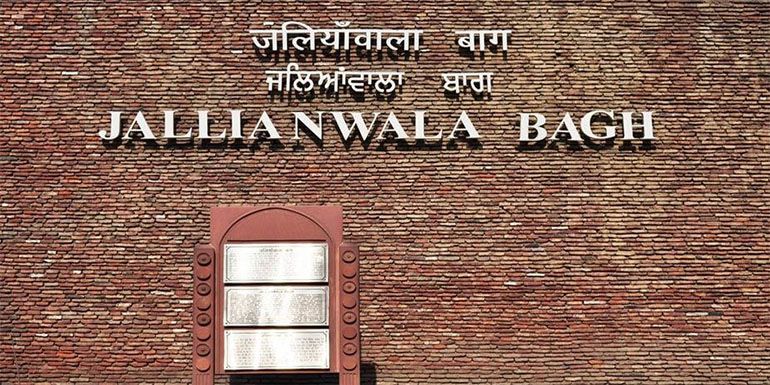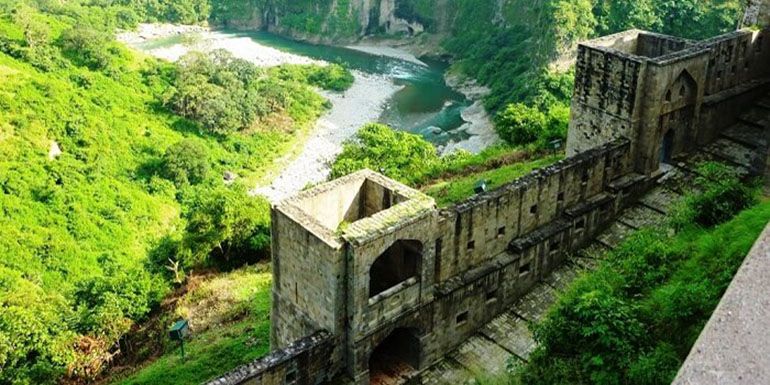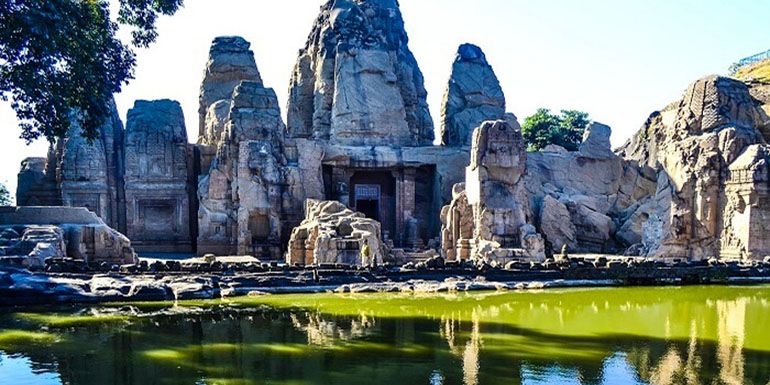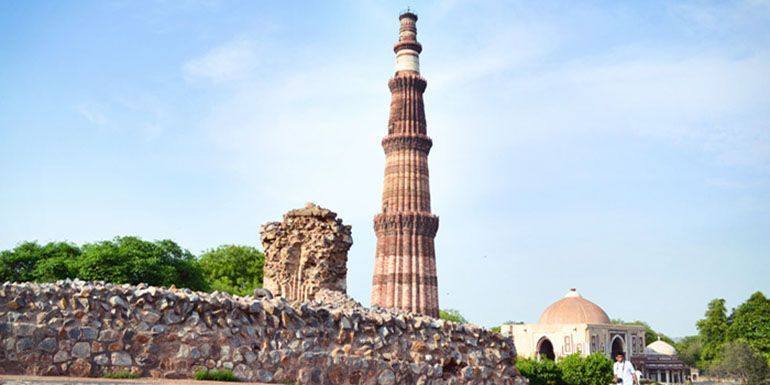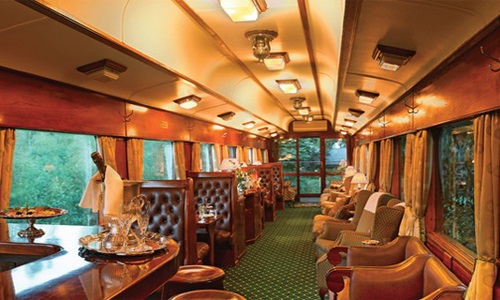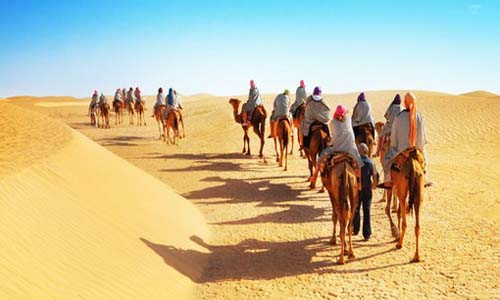Day 01: - Arrive Delhi
On arrival in Delhi meet and greet by Glorious India Tours and transfer to Hotel.
Delhi is acclaimed for being the cultural capital of India. The city has two distinct identities – the ‘Old Delhi and the ‘New’ Delhi the city having witnessed empires rise to glory and fall to ashes. some major tourist attractions. Old Delhi has the massive Red Fort (with a 350 year old city Shahjehanabad inside), the Jama Mosque, the crowded bazaars of Chandni Chowk and the cremation sites of Mahatma Gandhi (New Delhi, the creation of the British rule in India, has the stately President’s House, Parliament. Overnight stay at Hotel.
Day 02: - In Delhi
Morning Yoga session later breakfast at restaurant.
Post breakfast proceed for city tour -
Drive Pass of RashtrapatiBhavan ['President House/Presidential Palace'] is the official residence of the President of India, located in New Delhi, Delhi, India. Until 1950 it was known as 'Viceroy's House' and served as the residence of the Governor-General of India. It is at the heart of an area known as Lutyens' Delhi
Humayun's tomb is the tomb of the Mughal Emperor Humbyun. The tomb was commissioned by Humayun's first wife Bega Begum (Haji Begum)in 1569-70, and designed by Mirak Mirza Ghiyas, a Persian architect chosen by Bega Begum.[ It was the first garden-tomb on the Indian subcontinent, and is located inNizamuddin East, Delhi, India, close to the Dina-panah citadel also known as PuranaQila (Old Fort), that Humayun founded in 1533
The Lotus Temple, located in New Delhi, India, is a BahaiHouse of Worship completed in 1986. Notable for its flowerlike shape, it serves as the Mother Temple of the Indian subcontinent and has become a prominent attraction in the city. The Lotus Temple has won numerous architectural awards and been featured in hundreds of newspaper and magazine articles
QutabMinaris among the tallest and famous towers in the world. The minaret is 234 feet high [72.5 mtrs] and the highest individual tower in the world. It is called a red sandstone tower; Its construction was started around 202 by Qutbu'd-Din Aibak, the first Muslim Sultan of Delhi. It has five storey’s, and is the highest stone tower in India.
Evening Yoga session with Yog Guru.
Overnight stay at Hotel.
Day 03: - Delhi – Amritsar ( By Train 1209 SwarnShtabdi 0720/1340)
Early morning departs for Railway Station to board Shatabdi Train for Amritsar.
Amritsar: The name of the city derives from the name of the pool around the Golden Temple (aka Harmandir Sahib) and means "holy pool of nectar" (Amrit: elixir; Sar: (short for sarovar) lake). It is the spiritual and cultural center of the Sikh religion, and they are rightfully very proud of the city and their very beautiful and unique Gurdwara. The Golden Temple was initiated by Guru Ramdaas Ji, the fourth Sikh Guru, and completed in 1601 by his successor Guru Arjan Dev Ji. It is now a major pilgrimage center.
Afternoon arrive and transfer to Hotel.
Post lunch visit Golden Triangle and JalianwalaBagh.
Golden Temple: It is one of the most ancient and fascinating cities of India. It is an important seat of Sikh history and culture. Being the gateway for travelers coming to India on the overland route from central Asia it soon became the centre of various commercial activities. There are various historical and religious sites - see Amritsar City Map. The most famous of them all in the Golden Temple which was founded by the fourth Guru of Sikhs, Guru Ramdas and completed by his successor Guru Arjan Dev.
Jallian Wala Bagh: also known as the Amritsar Massacre, was named after the JallianwalaBagh (Garden) in the northern Indian city of Amritsar where, on April 13, 1919, 50 British Indian Army soldiers under the command of Brigadier-General Reginald Dyer opened fire on an unarmed gathering of men, women and children.
Later excursion trip to :
Wagah Border: -is the road border crossing between India and Pakistan, and lies on the Grand Trunk Road between the cities of Amritsar, India and Lahore, Pakistan. Wagah itself is a village through which the controversial Radcliffe Line was drawn.
Dinner and Overnight stay at Hotel
Day 04: Amritsar – Nurpur, Himachal Pradesh ( By surface 140 kms) – Dharamshala (By surface 160 kms)
Post early cold breakfast departs at 06 am for Dharmshala.
Dharmshala: is a city and the district headquarters of the Kangra district in the northern regions of India in the state of Himachal Pradesh. The town of Mcleodganj in Upper Dharamsala is known worldwide for the teachings of His Holiness the Dalai Lama that take place here every year. It is also his residence and the headquarters of the Tibetan Government in exile, led by the Prime Minister, SamdhongRimpoche. Mecleodganj is also referred to as Upper Dharamsala.
Arrive and transfer to Hotel. Lunch at Hotel.
Evening visitSt.John in the wilderness –
St. John in the Wilderness is an Anglican church dedicated to John the Baptist built in 1852, located near Dharamshala,India,India, on the way to Mcleoad Gang, at Forsyth Gunj. Set amidst deodar forest, and built in neo-Gothic architecture, the church is known for its Belgian stained-glass windows donated by Lady Elgin (Mary Louisa Lambton), wife of Lord Elgin.
Evening Yoga session.
Dinner and Overnight stay at hotel.
Day 05: - In Dharmshala
Morning Yoga session.
Post breakfast at the hotel depart for sightseeing visiting:
Norbulinka Institute: Situated at a distance of 4 km from Dharmshala, Norbulinka Institute has a mission to preserve and promote. It is a picture of old rural Tibet with all its shady paths, wooden bridges, small streams and tiny waterfalls, along with wooden carvings, Tibetan Thangka paintings, Tibetan handicrafts and arts.
Pos lunch visit Mc Leodganj.
Tsuglagkhang: In front of the private enclosure of the residence of Dalai Lama, Dharamsala’s main Buddhist temple, Tsuglagkhang, shelters images
Do Shayamuni, Padmasambhava and Avaloktesvara, all sitting in meditation postures and are surrounded by offerings from devotees.
Gompa Dip Tse-Chok Ling: The small Gompa Dip Tse-Chok Ling is located on the bottom of a steep track. The main Prayer hall has an image of the Shakyamuni. The monks who lived in the Gompa have made two huge drums covered in goatskin and painted around the rim. The butter sculptures, which are made during Losar, are destroyed in the next Losar festival. This Gompa is also famous for the fine and detailed mandals.
Evening is free to visit the market at Mecleodganj also known as Little Lahsa.
Evening Yoga session.
Overnight stay at Hotel.
Day 06: - In Dharamshala
Morning Yoga session.
Breakfast at Hotel.
Post breakfast proceed for city tour -
Library of Tibetan Works & Archives:
The Library of Tibetan works and archives stores almost 40 % of the original Tibetan manuscripts and is a repository of the rich Tibetan culture. The library also has a photographic archive. At GangchenKyishong are the Tibetan Medical and Astrological Institute.
Late afternoon visitBhagsunath Temple and Falls:
Bhagsunath Temple, an ancient temple 3 km east of Mcleodganj and 11 km from Dharamsala , Himachal Pradesh. This is a quiet temple and the numerous pools in the vicinity are considered sacred by devout Hindus. Other major attractions here are a serene spring and a small but majestic waterfall. Many slate quarries are located in and around Bhagsunath. The region offers breathtaking views of surrounding hilly ranges and woody forests.
Explore local shopping centre.
Evening Yoga session
Overnight stay at Hotel.
Day 07: - Dharamshala –Palampur (By surface 45 kms) En route visit Chamunda Devi Temple
Morning Yoga session.
Post breakfast drive to Palampuren-route visit Chamuda Devi Temple -
Chamunda Devi Temple is a renowned holy shrine of the Hindus, builtin 16th Century. Located in Kangra district of Himachal Pradesh, Chamunda Devi Mandir is at a distance of 10 kms from Palampur, on the banks of Baner River. This ancient temple dates back to the 16th century. The temple is dedicated to Chamunda Devi, who is a form of Durga / Shakti. Chamunda Devi Mandir is believed to be the abode of 'Shiva and Shakti'. Due to this reason, it is also known as 'ChamundaNandikeshwarDham'.
Palampur is a green hill station and a municipal council in the Kangra Valley in the Indian state of Himachal Pradesh, surrounded by tea gardens and pine forests before they merge with the Dhauladhar ranges. Palampur is the tea capital of northwest India but tea is just one aspect that makes Palampur a special interest place. The town has derived its name from the local word pulum, meaning lots of water. There are numerous streams flowing from the mountains to the plains from Palampur.
On arrival transfer to Hotel.
Evening Yoga session.
Overnight stay at Hotel
Day 08: - In Palampur
Morning yoga session.
Later breakfast at Hotel, Post breakfast proceed for city tour –
Saurabh Van Vihar –
Saurabh Van Vihar is a beautiful garden in the Palampur town, named after valiant Army officer, Captain Saurabh Kalia. The garden managed by the Himachal Pradesh Forest Department is situated in proximity to Neugal.
Tea Garden –
Tea Gardens are among the chief attractions of the hill-tow, due to which it is also referred as 'Tea Capital of Northwest India'. The hill station has lush tea gardens sprawling over vast acres of lan.
Baijnath Shiva Temple –
Baijnath Temple, located at a distance of 16 km from Palampur is one of the chief attractions of the region. This temple was established in 1204 A.D by regional merchants, named Ahuka and Manyuka. Since establishment, the temple dedicated to Lord Shiva.
Tashi Jong Monastery –
ashi Jong Monastery is one of the famous attractions of the region. Curved roofs mounted with red-golden colour ornamentation portray prayer flags. The monastery is more of a community than a religious centre of Buddhists.
Naam Art Gallery –
Naam Art Gallery is one of the popular sightseeing attractions, situated at a distance of few kilometres from Palampur. The gallery exhibits works of German painter ElsbethBuschmann, who visited India in 1980s. Some of the highlighting works displayed in the gallery.
NeugalKhad –
Located just 2 kilometers from the town, this place provides a fine view of the Dhauladhar Range, a perfect getaway from the hectic and busy schedule of daily life. Also known as the Bundla Chasm, it is a site of a 300 meter wide stream, where one can enjoy picnicking.
Evening Yog session.
Overnight stay at Hotel.
Day 09: - Palampur – Jawalaji Temple ( By surface 70 kms) –Pragpur ( By surface 20 kms)
Morning Yoga session.
Post breakfast drive to Pragpuren-route visit Jawalaji Temple.
The best known Jwala Ji shrine is located in the lower Himalayas in Jawalamukhi town of the Kangra district of Himachal Pradesh state of India, about 55 kilometers from the larger town of Dharamsala The temple style is typical of Jwala Ji shrines, four cornered, with a small dome on the top and a square central pit of hollowed stone inside where the main flame burns endlessly. An annual fair is held in the environs of the temple every July/August months during Navratras.
Arrive in Paragpur.
The beautiful landscape of Pragpur region offers ample opportunities for cycling, trekking, nature walks, bird watching, fishing or simple relaxation. Visits to weavers, silver- smiths, tailors, shoemakers and the Village market can be enchanting.
Evening at leisure for independent activities followed by Yoga session.
Overnight stay at Hotel.
Day 10: - In Pragpur
Morning Yoga session.
Post breakfast proceed for heritage village walk –
Heritage Zone:- The ambience of the Heritage Zone of Garli -Pragpur is zealously protected by the local residents. In their endeavour that Garli -Pragpur retains its unique character, panchayats preserve their heritage buildings .
Visit The Taal, Butail Niwas and The judges Court.
Dating before 1868, The Taal or pond forms the core of Pragpur village and serves as a recreational space for young and aged alike. It was constructed by the village brotherhood known as the Nehar Committee, which has records of its meetings since 1864. This body continues to be responsible for the maintenance of this ancient water system.
Butial Niwas - This is a unique building. Over a hundred years old, it was built by LalaButa Mal, a scion of the ChaujjarSood clan. It includes six identical apartments built for his six sons. These lie around a sunken courtyard. In warmer weather, this courtyard is flooded with water to provide cooling. The water for this has been brought by the Butails from the nearby NalsuyahKhad and provides drinking water to several villages.
The Judges Court built in 1918, this is a splendid country manor designed in Indo- European tradition. The visionary behind this bold structure was Justice Sir Jai Lal. It stands in 12 acres of greens, and is just a short walk from the village core and the Taal. It is now run by the owning family as a heritage hotel. Other places of interest within Heritage Village Pragpur are LALA RERUMAL HAVELI built in 1931 by a Rais of Pragpur which has a Mughal style garden, pleasure terrace and a large water reservoir.
Evening yoga at session.
Overnight stay at Hotel.
Morning Yoga session.
Post breakfast proceed for heritage village walk –
Heritage Zone:- The ambience of the Heritage Zone of Garli -Pragpur is zealously protected by the local residents. In their endeavour that Garli -Pragpur retains its unique character, panchayats preserve their heritage buildings .
Visit The Taal, Butail Niwas and The judges Court.
Dating before 1868, The Taal or pond forms the core of Pragpur village and serves as a recreational space for young and aged alike. It was constructed by the village brotherhood known as the Nehar Committee, which has records of its meetings since 1864. This body continues to be responsible for the maintenance of this ancient water system.
Butial Niwas - This is a unique building. Over a hundred years old, it was built by LalaButa Mal, a scion of the ChaujjarSood clan. It includes six identical apartments built for his six sons. These lie around a sunken courtyard. In warmer weather, this courtyard is flooded with water to provide cooling. The water for this has been brought by the Butails from the nearby NalsuyahKhad and provides drinking water to several villages.
The Judges Court built in 1918, this is a splendid country manor designed in Indo- European tradition. The visionary behind this bold structure was Justice Sir Jai Lal. It stands in 12 acres of greens, and is just a short walk from the village core and the Taal. It is now run by the owning family as a heritage hotel. Other places of interest within Heritage Village Pragpur are LALA RERUMAL HAVELI built in 1931 by a Rais of Pragpur which has a Mughal style garden, pleasure terrace and a large water reservoir.
Evening yoga at session.
Overnight stay at Hotel.
Day 11: - In Pragpur
Morning Yoga session.
Post breakfast proceed for heritage village walk –
Around Pragpur, River Beas with its unspoilt beaches (6 kms). offers a possibility of boating, swimming and angling during season. SERI and Naleti (4 kms) are epitome of pastoral tranquillity. Natural underground seepage feeds both Garli and Pragpur. Lovely country walks radiate from Garli and Pragpur. These include meandering country paths through rolling hills and valleys with gurgling brooks and a meadow where mint grows wild.
Evening Yoga session.
Overnight stay at Hotel
Day 12: Pragpur – Chandigarh ( By surface 185 kms)
Morning Yoga session.
Post breakfast check out from the Hotel and drive to Chandigarh.
Chandigarh: also called The City Beautiful, is a city in India that serves as the capital of two states, Punjab and Haryana, and is a union territory of India. The name translates from Hindi to English as "the fort of Chandi", Chandi being a Hindu Goddess.
On arrival transfer to Hotel.
After some rest visiting –
Sukhna Lake:is an artificial lake at the foothills of the Shivalik hills. This 3 km² rain fed lake was created in 1958 by damming the SukhnaChoe, a seasonal stream coming down from the Shivalik Hill.
Rock Garden: is one the finest venue for sightseeing. This popular sculpture garden covers an area of about 64 acres and was constructed by Nekchand using varieties of multi colored stones. The Rock Garden has attracted thousands of visitors since it was first opened for public viewing in the year 1976. It has been established in the form of an open-air exhibition hall. The garden houses sculptures made by using a variety of different discarded waste materials like frames, mudguards, forks, handle bars, metal wires, play marbles, porcelain, auto parts, broken bangles etc.
Evening Yoga session.
Overnight stay at Hotel.
Day 13: Chandigarh – Delhi (By surface 260 kms)
Morning Yoga session.
Post breakfast check out from the Hotel and drive Delhi.
On arrival in Delhi transfer to Hotel.
Later explore city centre.
Evening Yoga session.
Overnight stay at Hotel.
Day 14: - Delhi – Departure
Post breakfast in time check out from the Hotel and transfer to airport
To board a flight for onward destination.
Note : Tour Cost on request.
*************** TOUR ENDS *****************
Route: Delhi, Amritsar, Dharmshala, Palampur, Pragpur, Chandigarh



